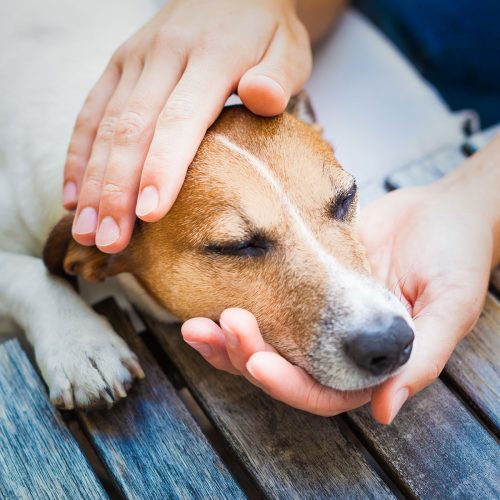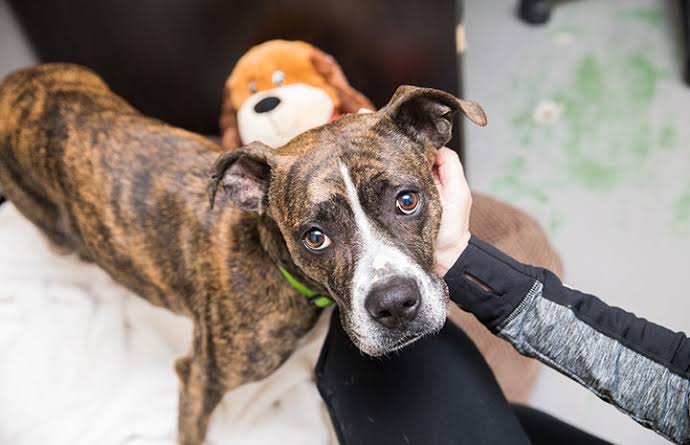You may already be aware of the difficulties associated with separation anxiety in pets if you have ever returned home to find your shoes torn, doors scratched, or a neighbour complaining that their pet was howling. When your dog or cat is left alone, it’s more than just bad behavior—it’s true panic.
The problem is that separation anxiety is not uncommon. According to studies, when separated from their owners, up to 20% of dogs and 14% of cats exhibit some degree of anxiety. If ignored, it may develop into harmful behaviours, self-harm, or chronic health problems brought on by stress.
The good news? Separation anxiety can be controlled and even avoided with the correct combination of instruction, calming supplies, and expert assistance when required.
What Separation Anxiety Really Is
Your pet isn’t “being naughty” because of separation anxiety. It’s a stress reaction to being by themselves or away from their favourite person.
Usually, signs show up minutes after you depart. Dogs often exhibit the following symptoms: excessive howling, whining, or barking. Chewing on doors, shoes, or furniture. Scratching at windows or doors. Trembling, drooling, or pacing.
Despite being house-trained, accidents occur indoors. Cats may exhibit: pulling fur or overgrooming. refusing to eat by themselves. excessive sobbing or meowing. voiding outside of the litter box. Clinginess prior to departure. The first step in helping them is realising that this is anxiety, not mischief.
Read Also: Are AI-Powered Smart Collars Good for Dogs?
Why Pets Develop Separation Anxiety
Separation anxiety doesn’t come out of nowhere. Some common triggers include:
- Sudden changes in routine: Post-pandemic office returns triggered anxiety in many pets used to constant company.
- Traumatic experiences: Shelter pets or rescues may have past abandonment issues.
- Overdependence: Pets that never learn to be alone may panic when left.
- Major life changes: Moving homes, a family member leaving, or even a new baby.
Every pet has a threshold. Some can be alone for hours, while others panic within minutes.
Training Tips to Ease Separation Anxiety
Training isn’t about quick fixes—it’s about slowly building your pet’s confidence and independence. Here are practical methods that work over time:
1. Gradual Desensitization
Start with very short absences—just a few seconds—and gradually extend the time. Reward calm behavior when you return. The idea is to teach your pet that you always come back.
Example: Pick up your keys, step outside for 30 seconds, then return without fuss. Slowly build up to 5 minutes, 15 minutes, and beyond.
2. Create a “Safe Zone”
Give your pet a space that feels secure, such as a crate (for dogs) or a quiet room (for cats). Stock it with favorite toys, blankets, or even an item of your clothing.
3. Practice Calm Departures and Arrivals
Avoid dramatic goodbyes and greetings. Instead of “I’ll miss you so much!” and hugs, keep it low-key. Emotional send-offs heighten the sense of loss.
4. Provide Mental and Physical Stimulation
A tired pet is less anxious. Daily exercise, puzzle feeders, or interactive toys can make a huge difference. A 30-minute walk or play session before leaving often works wonders.
5. Train Independence at Home
Even when you’re home, teach your pet to enjoy time alone in another room. Encourage independent play so they don’t rely on your constant presence.
6. Counter-Conditioning
Associate your absence with something positive. For example, leave a special chew toy or treat that only appears when you’re gone. Over time, your departure becomes a predictor of good things.
Products That Can Help
While training is the foundation, certain products can support the process and reduce anxiety levels.
- Puzzle feeders and treat-dispensing toys: Keep pets occupied and distracted.
- Calming pheromone diffusers (like Adaptil or Feliway): Mimic natural calming signals and reduce stress.
- Anxiety wraps (like ThunderShirts): Apply gentle pressure, similar to swaddling, which soothes many pets.
- White noise machines or calming music: Drown out external triggers like traffic or other animals.
- Pet cameras with two-way audio: Allow you to check in and even speak to your pet.
These aren’t magic bullets, but combined with training, they create a supportive environment.
When to Call a Vet or Behaviorist
Sometimes, separation anxiety is too severe to manage alone. If your pet:
- Hurts themselves while trying to escape.
- Loses weight due to refusal to eat.
- Shows destructive behavior despite training.
- Has anxiety that worsens over time…
…it’s time to consult a vet or certified animal behaviorist.
Why a vet?
- They can rule out medical issues (pain or illness can worsen anxiety).
- In severe cases, vets may prescribe anti-anxiety medication to stabilize your pet while training continues.
Medication isn’t a failure—it’s a tool. Just like humans with anxiety, pets sometimes need chemical support while they learn coping skills.
Preventing Separation Anxiety Early
Prevention is easier than fixing full-blown anxiety. For new puppies or kittens:
- Leave them alone for short periods early on to build independence.
- Avoid constant carrying or shadowing them around the house.
- Normalize routines so they don’t depend on your presence every second.
Building confidence early reduces the risk of panic later.
The Cost of Ignoring Separation Anxiety
Some owners think “they’ll grow out of it.” In reality, unaddressed separation anxiety can:
- Destroy property (chewed doors, furniture repair bills).
- Cause injuries (broken teeth, torn nails, or cuts from escape attempts).
- Lead to chronic stress-related illnesses.
- Damage the bond between pet and owner.
In severe cases, untreated anxiety is even a reason pets are surrendered to shelters. Addressing it early is not only kind—it can be life-saving.
Real-Life Example
Take Bella, a 3-year-old rescue dog who barked non-stop and destroyed furniture whenever left alone. Her owner thought crating would help, but Bella panicked more, even injuring her paws.
After working with a trainer, Bella’s owner introduced gradual desensitization, puzzle feeders, and a calming diffuser. With time, Bella learned to tolerate alone time up to four hours. Eventually, a vet added mild medication to ease her stress during the transition. Today, Bella spends peaceful afternoons napping instead of panicking.
It wasn’t overnight, but persistence paid off.
FAQs on Separation Anxiety in Pets
- Can cats really have separation anxiety?
Yes. While often associated with dogs, cats can also suffer, showing signs like excessive meowing, not eating, or urinating outside the litter box. - How long does it take to fix separation anxiety?
It varies. Mild cases may improve in weeks, while severe cases can take months of consistent training and support. - Should I get another pet to solve the problem?
Not necessarily. Some pets gain comfort from company, but others don’t. Adding a second pet without addressing anxiety can double the stress. - Does punishment help?
No. Scolding or punishing a pet for anxious behavior only makes it worse. Anxiety is fear-driven, not disobedience. - Are there natural remedies that work?
Some owners use supplements like CBD oil, chamomile, or valerian root (vet-approved). They may help mild anxiety, but they’re not substitutes for training.
Final Thoughts
Separation anxiety is one of the most challenging issues for pet owners, but it’s not hopeless. With patience, training, and sometimes professional help, pets can learn to feel safe when alone.
The key is recognizing the difference between misbehavior and true anxiety. Where mischief can be corrected, anxiety requires compassion and structure. Left unchecked, it harms both your pet’s health and your household harmony.
So, whether it’s a puzzle feeder, a new training routine, or a call to your vet, start today. Every small step you take reassures your pet: being alone doesn’t mean being abandoned.
And in the end, isn’t that what they really need to know?



